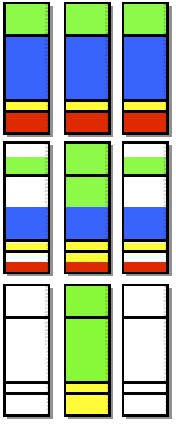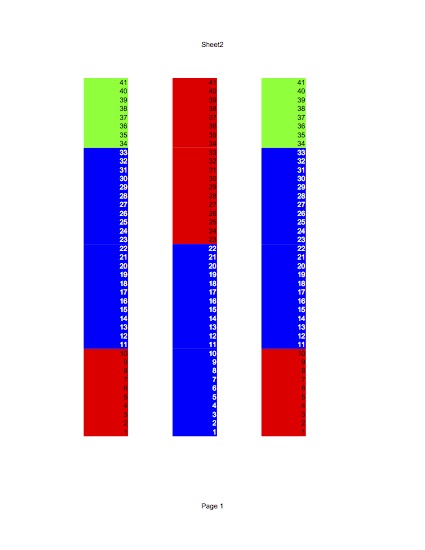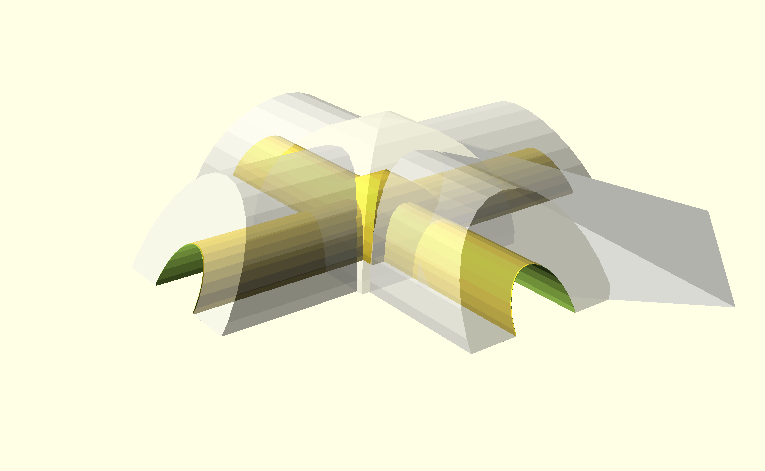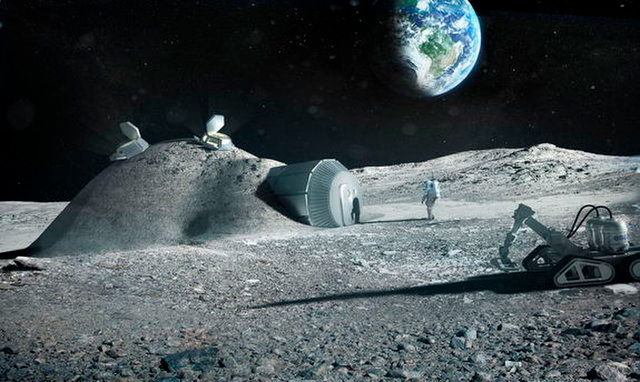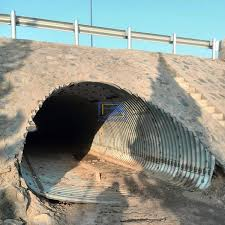

Frank
Senior Members-
Posts
179 -
Joined
-
Last visited
Content Type
Profiles
Forums
Events
Everything posted by Frank
-
Still seems more efficient to run a magnet pushed by a piston through a coil of wire or convert fuel directly to electricity through a fuel cell. Maybe this would make an efficient power take-off for jet engines?
-
I glanced at the link you posted which has efficiency at 70% conflicting with wiki's (presumably more recent than 1987) 22%. The link has MHD as the receiving end of a laser transmission system for power transmission which was one way of efficiently producing plasma (that's interesting). Other ways are to use heat from nuclear to create liquid metal (LMMHD) and there is mention of brayton cycle or rankine cycle. Maybe I didn't read it right? Let's go the other way, maybe you can explain further how MHD would be used with fossil fuel - create a plasma flow somehow, but how is the plasma energy recovered once it passes the MHD generator?
-
MHD is interesting and I'll look into it more, but for this application, it looks like conversion of fossil fuel to laser energy would be inefficient. Nuclear reactors - too heavy (among other issues). Brayton cycle needs a regenerator and heat exchangers are always heavy - why turbines tend to weight more than ICE. Take these as hints/pointers for what to look for as show stoppers, I'm just responding from memory of the research I did for that same application. Come to think of it, in the ICE category, free-piston engine (or similar integrated generator/engine) generators are coming soon.
-
Only if efficiency, weight and cost are better than alternatives. Best I can tell, ICE is best now and fuel cells next if cost and weight come down. Hadn't heard of MHD: https://en.wikipedia.org/wiki/Magnetohydrodynamic_generator#Generator_efficiency
-
A Falcon Super Heavy version of full propellant cross-feed normally arranged in a cross, not a row as I depicted for illustration. Propellant transfers into a tank instead of trying to match pressure in direct feed to engines. The tank could be carbon-fibre and as small as allows buffering and gas elimination etc... Making it span the width of the rocket allows direct access from the sides. The smaller tank means the whole pressure of the rocket head must be borne, but is less than 100 psi, so manageable. What's neat about doing it this way is that the outer rockets don't need much modification except a port with a valve, no extra dome. So, what I called a baffle is actually called a dome (an oblate spheroid shape?) Another animation:
-
Instead of using pipes in tanks, I inverted the extra baffles and gave them a slight slope. A sealed box would give access to the valves and ports. Two ports below the inverted baffle on either side to receive LOX (blue), via a check valve, blocked when on the boosters. A single valve for the core across the baffle so it acts as a single tank once separated, this port is also permanently closed or blocked on the boosters. A xfeed valve on the boosters just above the inverted baffle and on the low side connects to the ports below the baffle on the core. Similar idea for RP-1 (red). Here is an animated gif of the propellant cross-feed (Xfeed) time is compressed 10x, proportions are to a 40m rocket. Burn time was set to 150s for the middle once separated and results in 100s burn time with all 27 engines on (9 per fuselage), burning through 300s worth of fuel. The connecting hoses are missing, as is the rest of the rocket, but I think it's pretty clear what's happening? I have no idea if this idea is innovative, common or stupid. I haven't found anything similar on the net yet.
-
This type of thing? http://www.puritanmagnetics.com/1/magnet/plate_magnets.asp Basically a strong magnet in a stainless steel box. Since price is the issue, maybe source it from China - like aliexpress or alibaba. If you really want to design your own, price out ceramic magnets and figure out some sort of plastic cover maybe? Arrange magnets in a Halbach array (could be difficult to align the magnets). Redesigning tends to be more expensive for a one-off.
-
Here is a free program that will help you design your magnet. Not knowing much about the design, I'm concerned that if you get such a powerful magnet working it will interfere with equipment in the shop or even cause harm. Also the magnetic field won't act uniformly under the square metal plate. This program will help you get a feel for what is possible. http://www.femm.info/wiki/HomePage
-
To keep the RP-1 tank at the bottom, adding a baffle to the LOX tank and holding a portion in reserve for post-separation allows LOX to flow into the lower section from the boosters and post separation from the top section of the LOX tank. The extra baffles would improve the rocket structure as well. The same baffle trick can be used for RP-1 if pumping is an issue, like this: The cores (middle) and boosters (sides) at 3 different times - launch at top, midway to separation at middle, at separation at bottom. Green is LOX propellant crossfeed, yellow is RP-1 crossfeed, blue is LOX and red is RP-1. There are baffles between green and blue and between red and yellow which allow gravity crossfeed with some extra plumbing and valves. Then the 15% extra delta-v expected from crossfeed can cover the loss for reuse. The BFR plan calls for transfer of cryogenic propellant by micro acceleration, so LOX transfer under large acceleration calls for similar plumbing work/knowhow. Starting with cryogenic LOX crossfeed only might minimize risk of failure, compared to transferring RP-1 or liquid methane (for BFR).
-
I get an increase in payload of ~5% using gravity feed tank to tank, 2 extra bulkheads in the boosters (mass not accounted for), LOX tank at bottom of main core (which may need some extra plumbing – mass not accounted for). Not really worth it? It seems throttling back the core engines to 70% reduces crossfeed advantage, but it seems like throttling back incurs some loss I haven't accounted for? It looks like this - stacks represent core and boosters tank placement. red is RP-1, blue is LOX, green is crossfeed LOX. Main core mass LOX: 243t (always metric tonne) RP-1: 161t Total mass: 404t Booster mass LOX crossfeed: 85t LOX: 242t RP-1: 95t Total mass: 422t Stage1 xfeed Propellant mass: 910t Total mass: 1,468t Isp: 301s Delta-v: 2,855m/s Stage2 xfeed Propellant mass: 338t Total mass: 530t Isp: 311s Delta-v: 3,097m/s Stage 3 xfeed propellant mass: 108t total mass: 178t Isp: 342s Delta-v: 3,119m/s Crossfeed payload mass: 66.1t Stage1 Propellant mass: 1,123t Total mass: 1,465t isp: 301s Delta-v: 4,296m/s Stage2 Propellant mass: 125t Total mass: 313t Isp: 311s Delta-v: 1,550m/s Stage 3 Propellant mass: 108t Total mass: 174t Isp: 342s Delta-v: 3,224m/s Total delta-V for baseline: 9,070m/s FH as I modelled it payload: 62.6t Payload improvement: 5.61%
-
Maybe try paintball solenoids, should be high pressure, lightweight and cheap. Found type info, but no spec sheet. http://zdspb.com/tech/misc/solenoids_models.html here a spec sheet http://www.macvalves.com/wp-content/uploads/PDFs/Series_Pages/Sm3ways/33catalog.pdf Need a pressure regulator (100 psi max).
-
I'm curious what you used as an oxygen tank. I read some discussions (can't remember where) about the pros and cons of NOx (because they are available in small and light cartridges) and other things such as paintball cartridges. Also wondered if some sort of pressure regulator is used or just a tiny orifice? So you're looking for a servo controlled valve or maybe a pulsed solenoid, something like a throttle body injector? What did you choose to vary the flow rate?
-

I need help on my rocket engine thrust equation
Frank replied to Monomethylhydrazine's topic in Engineering
I can't answer your question directly, but I found a spreadsheet that probably has all the equations ready for your numbers to be plugged into: http://www.watzlavick.com/robert/rocket/regenChamber3/index.html- 1 reply
-
1
-
I build a fairly cheap 3d-printer from an aliexpress kit. Not as easy as the shiny brochures, but works. My neighbour and I are talking about building a rocket and he's even considering smelting metal. 3d printed waste casting would help with that too. Big plans, not enough time. I don't know if you missed the question or it's top secret , but does a reaction wheel come as a unit?
-
I imagine you've already considered, but apparently ABS can be 3d-printed into an optimal shape for hybrid engines' fuel: http://www.stratasys.com/resources/case-studies/aerospace/rocket-crafters Is there such a thing as reaction wheel kit or do you have to roll your own?
-
Wow! That sounds like fun. Two thoughts were (and I have no experience with this) how do you keep the rubber or wax from continuing to burn and how do you re-ignite the rocket? Or is that the answer, it just keeps burning but at a slower rate. If I understood correctly what "propulsive landing" means spacex or blue origin type of tail landing. Some kind of inverse pendulum algorithm and directional thrust. Or the reaction wheel is to hold it upright, like a spinning top. Interesting.
-

Moon Base habitat using corrugated panels formed in-situ
Frank replied to Frank's topic in Engineering
Here is a rendering of a moon base for 6 crew, 3 rovers, one garage bay and a (small) common area. The cupola is made of steel or aluminium panels inserted into pre-formed (or later 3D printed) connectors. Further structures can be build using ISRU metal or regolith bricks from the oxygen extraction process and can have larger common areas. I put 5 m of regolith based on papers I read, though common thinking of late is that reducing radiation by half with 1 m thickness is enough. I'm thinking long term stay. The ramp(s) that are used to cover the station could later be used for connecting tunnels that pass underground allowing free movement of vehicles between buildings. -
I'm calling the lunar rotavator LunaMET (lunar momentum exchange tether). This is a simplified version of the above given the possibility of SEP tugs (Solar Electric Propulsion tugs) which would slowly lift cargo from LEO to EML-1, can stow their solar panels for aerobraking return to LEO and can be used as power source for modules when not hauling cargo. To simplify, use the lunaMET only to move cargo to and from the moon and EML-1 (no power lines down the tether). At EML-1 would be the recharge infrastructure for batteries. Also at EML-1 would be the electrolysis unit to convert water to LOX and either LH2 or LCH4. EML-1 would also have a propellant depot which may simply(tm) be rocket upper stages. So the SEP tugs would plug their solar panels (somehow) into the EML-1 station to run the production machines, notably battery chargers and water electrolysis. It seems the lunar rover proposed by NASA would have a payload mass between 3 to 6 t (on the moon), so it might make sense to use this as a maximum cargo mass for the LunaMET. Let's call this object (3 to 6 t) a cargo_unit. https://www.space.com/5098-nasa-chariot-father-lunar-rover.html Essentially, the counterweight matches tether mass and the hub has solar panels that are effectively two SEP tugs, one on each side, with deployed solar arrays at 90 degree offset so they don't obscure one another. The counterweight mass would be lunar regolith. Somehow brought up using the tether. Maybe use the fat end of the tapered lunaMET cable as a counterweight and lift smaller mass to bootstrap the system. The SEP tugs would be scaled to use a number of X3 ion drives (5.4 N, 102 kW) pushing a cargo_unit mass. The number depends on acceptable LEO to EML-1 trip duration. SEP tug: http://www.spaceflightinsider.com/missions/human-spaceflight/solar-electric-propulsion-nasas-engine-mars-beyond/ If cargo_unit is 5 t, a falcon 9 could put two of them into LEO. To keep trip duration to about a month, two drives and ~200 kW of solar panels would be required. LunaMET mass would climb to 80 t! Some amortization calculations need to be done to figure out the best value for cargo_unit. Launches needed VS expected savings in mass lifted/landed. Given that the same rovers would likely be used on Mars, and 2.5 t would be the max. cargo there, 2.5 t might be the best value for cargo_unit. It also happens to be exactly what the lunavator paper uses meaning in a 40 t LunaMET mass. Of course, on the moon, the rover could carry two 2.5 t cargo_units. Going with two Ion engines on the SEP tugs gives a bit of extra redundancy and speed. Efficiency can be increased at the expense of trip duration by pushing multiple cargo_units. Falcon 9 lifts 10 t in one go, so there is some flexibility as to the number of tugs to use.
-

Moon Base habitat using corrugated panels formed in-situ
Frank replied to Frank's topic in Engineering
A moon base garage, a place where dusty lunar equipment is serviced or repaired, would be a pressurized and climate controlled area where access from outdoors would be through an airlock, and interior to garage access would be via a suitport version of a SCAPE suit. https://en.wikipedia.org/wiki/Suitport The SCAPE suit would give workers increased access, mobility and dexterity because the suit is neither pressurized nor heated or cooled. It is a barrier between a dusty and possibly non-breathable atmosphere maintained in the garage. https://en.wikipedia.org/wiki/Hazmat_suit#Types -
After reading all this info about space solar panels and ion drives, It occurred to me that the 100 kW megaflex https://www.orbitalatk.com/space-systems/space-components/solar-arrays/docs/MegaFlex_Solar_Array.pdf solar array being developed might power that X3 thruster making a tug for small loads, for example 2.5 t which happens to be the design load for the lunavator. So if the mass of the thruster and solar arrays is 500 lbs plus 150 W/kg, we get (500 pounds) + ((100 kW) / (150 (W / kg))) = 893.462852 kilograms and doubling for structure and other equipment = 1,786.9257 kilograms plus payload 2.5 t is about 4.3 t pushing 4.3 t from LEO to EML-1 needs 3.8 km/s delta-v So we're looking at somewhere around 3.8 km/s /(5.4 N / 4.3 tonne) = 35 days But if we build a fleet of them, taking advantage of mass production, we can haul large payloads or fuel for pretty cheap (relatively). Note, I didn't include ion drive propellant, so likely more than a month... mass of propellant m0 = 4300 * Math.exp(3800 / (9.8 * 3000)) m0 = 4893.2990256160165 So propellant is about 593 kg Is there an easy way to figure out time given the non-linear propellant/mass rate? So more than 35 days and less than 40 days to reach EML-1 from LEO, maybe more because we can't take advantage of the Oberth effect?
-
Another (possibly silly) idea for a moonbase habitat, hopefully the last for a while: The latest ideas for moonbase as put forth by ESA is a 3D-printed shell made substantially of lunar regolith. https://www.space.com/19602-moon-colony-3d-printing-lunar-dirt.html Robots would be sent ahead of crew landing to build the base out of material sent from earth with in-situ resources. This seems ambitious to me on the how many things can go wrong front, though I admit it is very cool. So my idea is more pedestrian. In a previous thread I suggested using landed/crashed propellant tanks http://www.scienceforums.net/topic/110982-lithobraking-for-lunar-soft-landing-or-habitat-formation as outer shells for habitat, but after learning how thin the material is I fear it would be too easily deformed. So start with fresh aluminium or steel roll, possibly pre-cut to built corrugated culverts that are covered by up to 10 m of regolith to protect inhabitant from high-energy cosmic rays. An added feature is a carport (or Lunar rover port) that is used to reduce damaging cosmic rays on the rover, but also to taper up the thickness of the protective and insulating layer of regolith. http://www.corrugatedsteelculvert.com/Arch-corrugated-steel-culvert-pipe-_831.html Like the picture but with no bottom to save on launch mass, just a bend at the bottom and screws to hold the panel sections in place. The culvert would be about 4 m tall and 6 m wide in an arch shape, large enough to put a rover underneath. Maybe 12 m more or less in length, depending on desired crew area size. http://psipunk.com/nasa-testing-next-gen-lunar-rover-in-arizona/#more-712 The panels would be corrugated in-situ using a fancier version of this pictured machine, with variable radius capability and maybe robotic handling or some serious protection for the astronauts' suits. The whole arch would be a single panel. Mass estimate is around 100 kg/m for 4 mm aluminium. Moon weight is less than 20 kg per panel section. Some fancy robots might able to assemble this beforehand or the crew could maybe take refuge in the rovers until completion. The rover attachments would be used to cover the habitat with regolith. An inflatable lining like this one pictured and being developed with similar intentions would form the habitable part of the culvert. https://www.space.com/4640-inflatable-moon-base-prototype-heads-south-pole.html The back of the culvert could attach to a central large dome that could have different purposes such as crop growing area, common area, garage, workshop or could connect to other domes (eventually) with different purposes. Many culverts could abut in a star shape. The domes could have ports/skylights as the initial 3D-rendering has. Moulded composite endcaps for the portals/hatches/doors would finish off the habitat and ensure proper containment of each part. Similar construction can be used and similar thickness if less regolith is piled on the dome part, maybe only 1 m, otherwise thicker material will be required.
-
For those interested in tether analysis "Three Dimensional Dynamics of a Flexible Motorised Momentum Exchange Tether", includes many references (2016): https://pure.strath.ac.uk/portal/files/54060596/Ismail_Cartmell_AA2016_Flexible_motorised_momentum_exchange_tether.pdf
-
I may drop the whole momentum exchange tether idea in light of new (to me) information. It seems the solar energy per mass fraction has potentially shot up 10x recently by removing the substrate from space solar panels or using concentrated photovoltaics. Here is the 2011 paper: http://www.asertti.org/events/fall/2011/presentations-workshop/Landis.pdf promising 1,000 W/kg and 3,000 W/kg, but reality always bites us in the ass and Ultraflex actually delivered 150 W/kg (at 1AU) https://www.orbitalatk.com/space-systems/space-components/solar-arrays/docs/UltraFlex_Factsheet.pdf So 3x better than ISS panels I used as metric, but they still need to be pointed at the sun with a solar tracker, adding mass and don't operate ~20% of a year. The tether and catching apparatus etc... have significant mass as well. But the trackers and panels are known technology, whereas the momentum exchange tether is still conceptual. Tether mass to panel mass seems adversely disproportional. This means a tether would need less launch mass if some lunar regolith were used as ballast or it could deliver up to 3x the energy to a payload (battery or powered module). So maybe 180 kW for a 40 t system with 2.5 t payload. Still save the soft-landing cost. Some of that power can go to orbit restoration via the new X3 hall thruster (5.4 N at 102 kW, ~3,000 s Isp) http://ns.umich.edu/new/releases/25192-thruster-for-mars-mission-breaks-records. Two thrusters could be used if power from a previously charged battery payload were added to the solar panel output. Lunar solar panels would mean some holidays ~20% of the time where battery operated machinery would stop and those batteries would be used to power essential systems like stereos and TVs for downtime leisure... Hmmm.
-
Spectra® 2000 Hoytether™ http://www.tethers.com/papers/CislunarAIAAPaper.pdf Residual speed and height both need to be zero for the landing site ideally, but the paper states 0 m/s and 1 km height (top of a lunar mountain).
-

One year roundtrip, 30 day stay to Mars using solar thermal engines
Frank replied to Frank's topic in Engineering
I didn't say a short-stay mission can't be done with solar thermal, I wrote "So, it seems using Solar Thermal Propulsion for fast transit to Mars isn't helpful. Aerobraking a chemical rocket (the SpaceX way) is better. " I like simplicity and to me, using a chemical rocket (which we know works) and aerobraking (which we know works) to do a mission seems better than prototyping a solar thermal engine that will allow a spacecraft that can do aerobraking to be pushed out to Mars. Are there huge benefits to using STP I should consider for a short stay mission?



